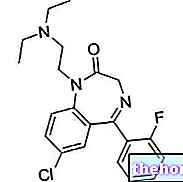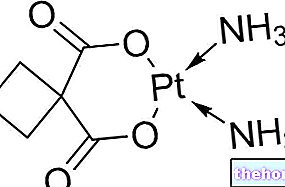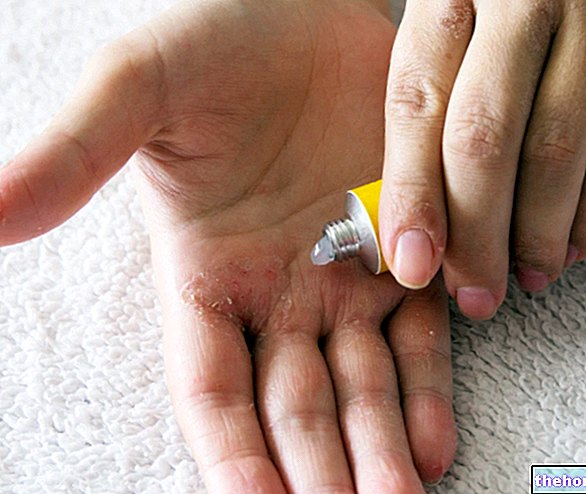Definition
Coccygodynia is a painful syndrome that affects the coccyx and / or the area surrounding it and is caused by a chronic inflammatory process.
This type of syndrome is very common in women, but it can also affect men.
Causes
As mentioned, coccygodynia is caused by a "chronic inflammation localized in the coccyx area and in the areas around it.
The causes of inflammation can be many: trauma and falls, childbirth, overload of the sacro-coccygeal region due to certain types of sports or work activities, postural vices and wear - due to age - of the discs of cartilage that hold the tailbone in place.
Furthermore, in some cases, coccygodynia could be due to the onset of a neoplastic pathology or to the expansion of a metastatic cancer.
In addition, overweight individuals run a greater risk of developing coccydynia than normal-weight individuals.
Symptoms
The characteristic symptom of coccygodynia is pain in the coccyx and surrounding areas. Other symptoms that may occur in patients with coccygodynia are muscle pain in the back, legs, buttocks and hips, pain during or before bowel movement, stomach pain and perception of pain during sexual intercourse (the latter symptom, however, it is quite rare).
Furthermore, in women with coccydynia, the pain caused by the disease may increase in conjunction with the menstrual cycle.
The information on Coccigodynia - Medicines and Treatment of Coccigodynia is not intended to replace the direct relationship between health professional and patient. Always consult your doctor and / or specialist before taking Coccigodynia - Medicines and Treatment of Coccigodynia.
Medicines
The drugs most used for the treatment of coccydynia are analgesics and NSAIDs (non-steroidal anti-inflammatory drugs), possibly used in combination with muscle relaxants to reduce the muscle stiffness that may arise. Usually, the drug therapy just described is sufficient to control milder cases of coccydynia.
In cases of coccydynia characterized by particularly severe pain, the doctor may decide to use opioid analgesics to relieve the patient.
Another therapeutic approach that can be considered is that based on corticosteroid injections, often in combination with local anesthetics.
The use of chiropractic, osteopathy or physiotherapy can also relieve pain caused by inflammation.
Surgical treatment, on the other hand, is reserved only for very severe cases of coccydynia in which conservative therapy has proved ineffective.

The following are the classes of drugs most used in the therapy against coccygodynia and some examples of pharmacological specialties; it is up to the doctor to choose the active ingredient and dosage most suitable for the patient, based on the severity of the disease, the state of health of the patient and his response to treatment.
NSAIDs
NSAIDs are the first therapeutic approach that is undertaken for the treatment of coccygodynia, in fact - being endowed with anti-inflammatory properties - they help to decrease the inflammation that characterizes this syndrome. Furthermore, NSAIDs also have a good analgesic activity.
Among the drugs most used in therapy, we remember:
- Ibuprofen (Brufen ®, Moment ®, Nurofen ®, Arfen ®, Actigrip fever and pain ®, Vicks fever and pain ®): Ibuprofen is available in different pharmaceutical formulations suitable for different routes of administration. When administered orally the dose maximum daily should not exceed 1,200-1,800 mg of active ingredient The exact amount of drug to be used must be established by the doctor.
- Naproxen (Momendol ®, Synflex ®, Xenar ®): when naproxen is administered orally, the dose usually used is 500-1,000 mg of drug per day, to be taken in divided doses every 12 hours.
If, on the other hand, naproxen is used in the form of a gel or cream for skin use, it is recommended to perform two applications a day, directly on the affected area.
Of course, the information just provided regarding the doses of active ingredients usually used in therapy are indicative. The exact dosage of each medicine, in fact, should always be established by the doctor.
Muscle relaxants
For the treatment of coccygodynia, in addition to NSAIDs, the doctor may also prescribe muscle relaxants, in order to reduce the excessive muscle contraction that may occur.
An example of a muscle relaxant that can be used is thiocolchicoside (Miotens ®, Muscoril ®). This drug is available for oral and parenteral administration.
When taken orally, the usual dose of thiocolchicoside used is 8 mg, to be taken twice daily at twelve hour intervals. It is important never to exceed the maximum daily dose of 16 mg of the drug. The duration of treatment should not exceed 7 consecutive days.
When administered parenterally, however, the maximum recommended dose is 8 mg per day, to be administered intramuscularly in two divided doses twelve hours apart. In this case, the duration of treatment should not exceed 5 consecutive days.
Pain relievers and opioid analgesics
Analgesic drugs are used to relieve pain caused by coccydynia.
The most commonly used pain reliever is:
- Paracetamol (Tachipirina ®, Efferalgan ®, Panadol ®). It is a drug that can be administered through different routes, as it is available in numerous and different pharmaceutical formulations.
When administered orally, the usual dosage is 500-1000 mg, to be taken as needed up to 3-4 times a day. An interval of at least 4-6 hours must elapse between one administration and the next.
In the event that the pain caused by coccydynia is particularly intense, the doctor may decide to prescribe opioid analgesic drugs. However - due to the side effects they can cause - the use of these medicines is reserved only for particularly severe cases.
Among the opioid analgesics that can be used, we remember: - Tramadol (Contramal ®, Patrol ®): Tramadol is available for oral, rectal and parenteral administration. Generally, the starting dose of tramadol that is administered is 50-100 mg. Later - if he deems it necessary - the doctor may decide to increase the amount of active ingredient to be used, until the optimal dosage is identified that allows adequate control of the painful state.
Corticosteroids
Injections of corticosteroids relieve both inflammation and pain caused by coccygodynia. Injections can be given both in the coccyx at the intra-articular level and in the surrounding tissues.
This practice is very delicate and should only be carried out by specialized personnel. Furthermore, corticosteroid administrations should not be given frequently, as there is a risk of causing damage to the coccyx and lower back.
Among the corticosteroids that can be used in the treatment of coccydynia, we remember:
- Methylprednisolone (Depo-Medrol ®): in this case, methylprednisolone can be used in combination with lidocaine (a local anesthetic). When administered intra-articularly, the dose of drug used varies from 4 mg to 80 mg, depending on the severity of the disease.
If, on the other hand, methylprednisolone is administered intramuscularly, the dosage of drug used is 40-120 mg, depending on the severity of the inflammation. - Triamcinolone (Kenacort ®): The usual starting dose of triamcinolone is 2.5-15 mg. The exact posology must be established by the physician on an individual basis for each patient, depending on his condition and the severity of the coccygodynia.




























